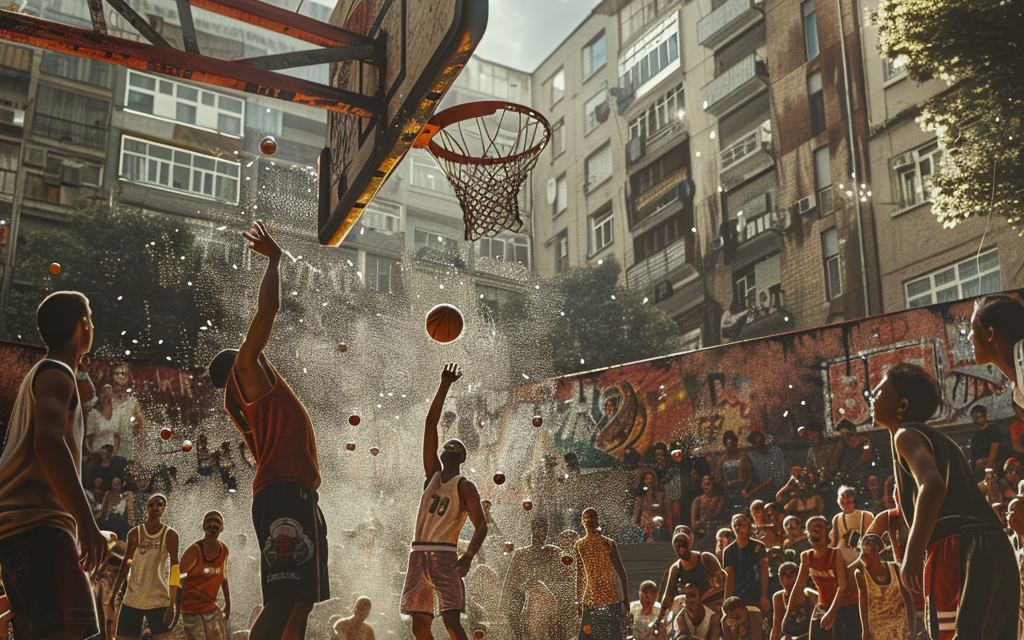Introduction
Basketball, now a cornerstone of global sports culture, had humble beginnings that belied its future impact. Its invention by Dr. James Naismith, a Canadian physical educator, was a simple yet ingenious response to the need for an engaging indoor sport. Naismith’s creation has grown from a rudimentary game played with a soccer ball and peach baskets to an international phenomenon, captivating millions with its blend of athleticism, strategy, and dynamic play.
The Need for a New Game
In the late 19th century, the physical education landscape was starkly different from today’s vibrant sports scene. Dr. Naismith faced the challenge of creating a new indoor activity that could keep his students at the International YMCA Training School in Springfield, Massachusetts, active during the harsh New England winters. The existing sports either required more space than was available indoors or were too rough for safe play in a confined setting.
The Birth of Basketball
Naismith’s solution was elegantly straightforward. Drawing inspiration from a childhood game known as “Duck on a Rock,” he formulated a set of 13 rules for a game that emphasized skill and accuracy over brute strength. The first game, played in December 1891 with a soccer ball and two peach baskets nailed to the gymnasium balcony, was a modest affair. Yet, the excitement it generated among players and spectators alike signaled the birth of a new sport.
Early Evolution of the Game
As basketball’s popularity soared, so too did the need for standardizing its rules and equipment. The original 13 rules were adapted to facilitate smoother play and greater spectator enjoyment. The spread of basketball was rapid, with the YMCA playing a crucial role in introducing the game across the United States and internationally. By the turn of the century, basketball was being played in colleges, and the transition from peach baskets to metal hoops and nets marked a significant evolution in the game’s equipment, making it more practical and enjoyable.
Basketball Goes Global
The YMCA played an instrumental role in basketball’s global dissemination, using its international network to introduce the game to young people worldwide. This global spread was further accelerated when basketball was included as a demonstration sport in the 1904 St. Louis Olympic Games, marking its debut on the world stage. Official recognition came in 1936 at the Berlin Olympic Games, solidifying basketball’s status as a global competitive sport. The establishment of major international leagues, including the EuroLeague and various professional leagues around the world, has since showcased the game’s universal appeal and versatility.
Cultural Impact of Basketball
Basketball has left an indelible mark on American culture, serving as a mirror reflecting the nation’s struggles and progress with racial integration and social change. Legends like Bill Russell and Kareem Abdul-Jabbar used their platforms for advocacy, advancing civil rights causes. Globally, basketball has become a universal language of sorts, bridging diverse cultures and fostering a sense of community among players and fans alike. Its global reach has not only spread American culture abroad but also brought international influences into the NBA, enriching the sport.
Modern Basketball
From Naismith’s original game to today’s high-flying, fast-paced spectacle, basketball has undergone significant evolution. Innovations in rules have made the game more dynamic and viewer-friendly, while advances in equipment, from the introduction of breakaway rims to moisture-wicking uniforms, have improved player performance and safety. The advent of digital media and technology has transformed how fans interact with the game, making basketball a global phenomenon accessible to fans anywhere, anytime. Social media, in particular, has played a pivotal role in elevating players to global celebrity status, while online streaming ensures that every game is watched by millions worldwide.
Conclusion
The journey from a simple game invented by Dr. James Naismith to keep students active during winter to a global sport beloved by millions is a testament to basketball’s enduring appeal. Its evolution reflects broader cultural and technological shifts, while its impact on society extends far beyond the hardwood. Naismith’s legacy lives on in every alley-oop, every buzzer-beater, and every pick-up game played in parks around the world. As basketball continues to evolve, its essence remains a celebration of competition, community, and the human spirit.





